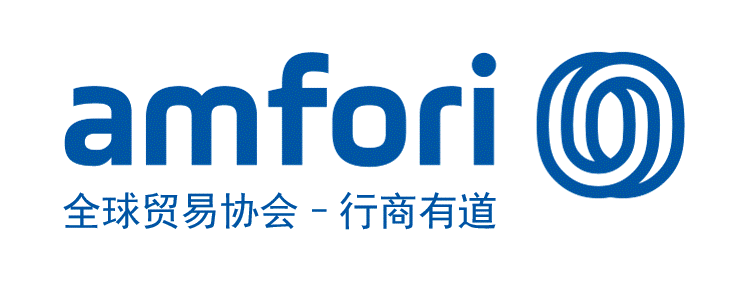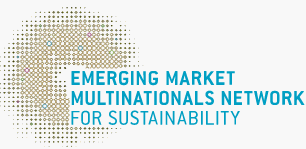Yin Gefei:Seven changes in ESG disclosure brought by ISSB Standards
2023-12-25GoldenBeeYin Gefei0

On June 26, the International Sustainability Standards Board (ISSB) officially released two IFRS Sustainability Disclosure Standards: IFRS S1 General Requirements for Disclosure of Sustainability-related Financial Information and IFRS S2 Climate-related Disclosures.
The introduction of these new standards signifies a stride towards consistency, heightened comparability, and increased comprehensibility in global sustainability disclosure. It is also expected to bring about new developments and changes in current sustainability disclosure practices.
On December 8, the 16th International Conference on CSR Reporting in China was held in Beijing, co-hosted by the China Business Council for Sustainable Development (CBCSD) and the GoldenBee ThinkTank.
During the conference, Mr. Yin Gefei, Chief Expert of the GoldenBee ThinkTank and Founder of GoldenBee Consulting, delivered a speech with the theme of "Seven Changes in ESG Disclosure Brought by ISSB Standards," discussing the anticipated transformations ISSB Standards would bring to future corporate sustainability-related disclosure.
Change 1: A driver for developing a "globalization + localization" sustainability/ESG disclosure framework
IFRS S1 serves as the general requirement for corporate sustainability disclosure and acts as the foundational guideline for all future specific-topic sustainability disclosure standards. IFRS S2 focuses on climate-related disclosure requirements. Additionally, ISSB incorporates SASB standards as part of its framework, offering industry-based disclosure references for 68 different sectors.
The general disclosure requirements, specific-topic disclosure requirements, and industry references within the ISSB Standards collectively form a globally unified baseline for sustainability/ESG disclosure. This baseline is continuously evolving and will subsequently introduce thematic standards on topics such as biodiversity, human capital, social capital, etc., further unifying the disclosure frameworks for each respective topic.
Simultaneously, the ISSB Standards take into account jurisdictional differences, allowing each jurisdiction to incorporate localized requirements on top of the existing global baseline. For instance, it is allowed to add requirements with unique characteristics of China to the ISSB Standards, thus forming the future guidelines for sustainability/ESG reporting and disclosure in China.
The "globalization + localization" framework of ISSB Standards aims to strengthen the uniformity, consistency, and comparability of sustainability-related disclosure. Once the sustainability/ESG disclosure framework, compliant with ISSB requirements, is established, ESG reports will predominantly exhibit a structure based on governance, strategy, risk management, as well as metrics and targets. This further enhances the consistency and comparability of information disclosure.
Change 2: A clearer emphasis on governance information disclosure from the dual perspectives of "governing bodies & the management"
One of its four core contents pertains to disclosure requirements concerning governance. This disclosure requirement distinctly emphasizes that corporate governance information disclosure should be approached from governing bodies and the management.
Currently, in China, there are challenges regarding the clarity in disclosure between the management and governance bodies, as well as their specific responsibilities alignment.
When disclosing corporate governance information, it is crucial not only to clarify the respective responsibilities of the governance and management roles but also to disclose how the governance body oversees risk and opportunity management. This includes establishing mechanisms to achieve risk and opportunity management goals and linking these mechanisms to senior management. Simultaneously, it is expected to disclose the control measures, procedures, and implementation progress of sustainability-related risk and opportunity set by the management.
The governance information disclosure required by the ISSB Standards introduces new demands and perspectives. Chinese enterprises need to emphasize this dual-perspective requirement and actively enhance their own disclosure content and quality of governance-related information.
Change 3: More attention on a "financial perspective" in disclosing ESG strategies
The ISSB Standards emphasize the disclosure requirement of ESG strategies with a focus on financial relevance. This refers to the correlation between a company's sustainability-related financial information and the information presented in its general-purpose financial statements. The ISSB Standards require companies to reflect the impact of sustainability-related risks and opportunities on their business models, value chains, strategies, decisions, and sustainability resilience on their current and expected impacts on the company's financial position, financial performance, and cash flow. This is aimed at providing investors, lenders, and other creditors with a clearer understanding for assessing the company's future prospects.
According to the ISSB Standards, when disclosing ongoing strategy information, companies are required to provide a clearer financial reports on the impacts of sustainability-related risks and opportunities on its prospects, value chain, business model, and strategic decisions over the short, medium, and long term.
The ISSB Standards present clearer requirements and a heightened disclosure perspective for companies regarding ESG strategy information disclosure. This signifies a crucial change for future corporate ESG reporting. Companies are required to elevate their focus on financial relevance in their disclosures.
Change 4: An "integrated management loop disclosure" of disclosure on ESG risk management
In terms of disclosure on ESG risk management, the ISSB Standards emphasize the necessity of a disclosure that forms an integrated management loop.
The ISSB Standards set forth stricter disclosure requirements, demanding that companies not only disclose the processes of identifying, assessing, prioritizing, and monitoring sustainability-related risks and opportunities, but also reveal the extent to which these sustainability-related risk management practices are integrated into their overall risk management processes. Moreover, it requires disclosure on whether and to what extent opportunities are integrated into their strategies.
Furthermore, companies are required to specify when sustainability-related risks and opportunities that have not yet been managed will be addressed in the future.
Currently, some Chinese enterprises are able to identify and use qualitative description for sustainability-related risks and opportunities. However, there is a need to enhance the capability for quantifying these risks and opportunities. Additionally, continuous improvement is necessary to increase the integration of sustainability-related risk and opportunity management with the overall risk control system of the enterprise.
Change 5: An authoritative reference in "setting ESG metrics, targets, and disclosure formats"
The ISSB Standards require companies to explicitly disclose metrics, targets, and performance indicators for monitoring and measuring sustainability-related risks and opportunities. This includes detailing the sources of metric references, midterm and incremental targets, and progress towards reaching the target.
In accordance with the disclosure requirements of the ISSB Standards regarding strategy, companies in the future need to set targets it is required to meet by law or regulation. This includes setting a timeframe for measuring progress and performance indicators.
This disclosure requirement provides authoritative references for the establishment and disclosure format of ESG metrics and targets for companies. When conducting relevant disclosure, companies need to clearly articulate the sources of their goal-setting and related indicators. Additionally, companies should particularly focus on reporting indicator presentation for monitoring the progress towards achieving these targets.
Change 6: More expectations on the "third-party verification" for ESG reports
In 2023, among 2,407 reports evaluated by the GoldenBee TinkTank, 217 reports underwent professional institution verification, accounting for 9.02%. This metric has steadily increased over the past three years. With over 90% of corporate reports lacking professional institution verification, it indicates a relatively low market response in China towards report verification.
The ISSB Standards integrate successful experiences of finance disclosure into sustainability reporting. Emphasizing the financial relevance, they underscore that information provided by companies should possess relevance, significance, comparability, verifiability, timeliness, and comprehensibility, akin to financial reporting, to ensure a true and fair reflection. This provides clear guidance for collecting, summarizing and organizing ESG information.
The ISSB Standards emphasize the requirements for consistency, comparability, verifiability, and third-party verification of quantitative data (such as GHG emissions), driving traceability in sustainability-related disclosure.
For instance, the ISSB Standards mandate companies to extensively disclose the inputs, assumptions, and methodologies used to measure risks or calculate quantitative sustainability-related indicators. This enables traceability in sustainability-related information, allowing for validation of the authenticity and accuracy through recalculations and similar methods.
The introduction of ISSB Standards raises further expectations for third-party scrutiny on corporate ESG reports and enhances the verification and traceability of information.
Change 7: Wider adoption to introduce the new concept of "ESG statements"
On November 16, 2023, the China Association for Public Companies released the ESG Value Accounting Report for Chinese Listed Companies (2023) with Goldenbee Consulting providing technical support for the report based on its extensive research into monetary valuation.
The report introduced a new concept of ESG reporting, wherein it quantifies the indicators from conventional ESG performance tables through monetary valuation. This process generates more intuitive and comparable ESG reports, aiming to assess the true ESG management outcomes of companies during the reporting period through financially quantifying each indicator.
The ESG net value constituting the ESG report is the calculated outcome of the net value of a company's environmental and social impacts. If a company generates positive impacts on the environment and society, the ESG net value of the corresponding impact indicators is positive. Conversely, it is negative if the impacts are adverse. By computing the overall environmental and social ESG net value, it genuinely reflects the value the company brings to society and the environment. Similar to financial statements, a company's ESG, social responsibility, and sustainability-related performance can be measured by using ESG net value.
The ISSB Standards focus on sustainability-related financial disclosures, emphasizing financial relevance. The widespread adoption of ISSB Standards in the future will further drive companies towards monetizing performance indicators. This will subsequently encourage the integration of ESG statements into ESG reports (including sustainability reports and CSR reports etc.).
Best Practices
- The 100-year brand — Air Liquide also has a sense of juvenile
- Beijing Public Transportation Corporation: Developing green transportation to build a harmonious and livable capital
- CGN: Building a modern factory in barren deserts and developing a new win-win cooperation model along “Belt and Road”
Upcoming Event

All the materials on the site “Source: XXX (not from this site)” have been reprinted from other media. They do not imply the agreement by the site.
All the materials with “Source: CSR-China Website” are the copyright of CSR-China Website. None of them may be used in any form or by any means without permission from CSR-China Website.
GoldenBee Official WeChat
Copyright © Csr-china.net All Right Reserved.
京ICP备19010813号










